Four
IN THE NEWS
A fascinating way to study the county’s recent history is to read old newspaper accounts of things happening in Accomack County years ago. These news stories give a feeling of immediacy to events that shaped the past. They provide a firsthand look at history, unfiltered by the passage of time. People can read about the great storm of 1933 just as local residents did in the days and weeks afterward. One can read the words and see the photographs, just as they did. A new resource that provides a wonderful window to the past is a Web site called the Countryside Transformed (www.douglass.vcdh.virginia.edu/easternshore). It deals with the railroad and the way it transformed the Eastern Shore in the years 1870 to 1930. It is an archive of newspaper articles, public records, first-person narratives, magazine stories, maps, and hundreds of photographs, truly a wealth of information for anyone with an interest in Eastern Shore history. It was compiled by Dr. Miles Barnes of the Eastern Shore Public Library in cooperation with the Virginia Center for Digital History at the University of Virginia.
In reading old newspapers and journals, it becomes evident that news falls into two categories. One category deals with singular events—storms, fires, airplane crashes—that happen suddenly, grab the headlines, and then disappear from coverage, if not memory. The other category is more far reaching, profound, longer term, and very likely to shape the history and culture of the community. Perhaps the best example of this would be the coming of the railroad in 1884. The railroad changed the landscape of Accomack County profoundly, as has been pointed out elsewhere in this book. Other news items of far-reaching impact might include the construction of the bridge and causeway to Chincoteague in 1922, the opening of the “Stone Road” (U.S. Route 13) in 1931, the Chesapeake Bay Bridge-Tunnel in 1964, the purchase of the barrier islands by the Nature Conservancy in the early 1970s, and the recent emergence of NASA Wallops as a major player in space exploration.
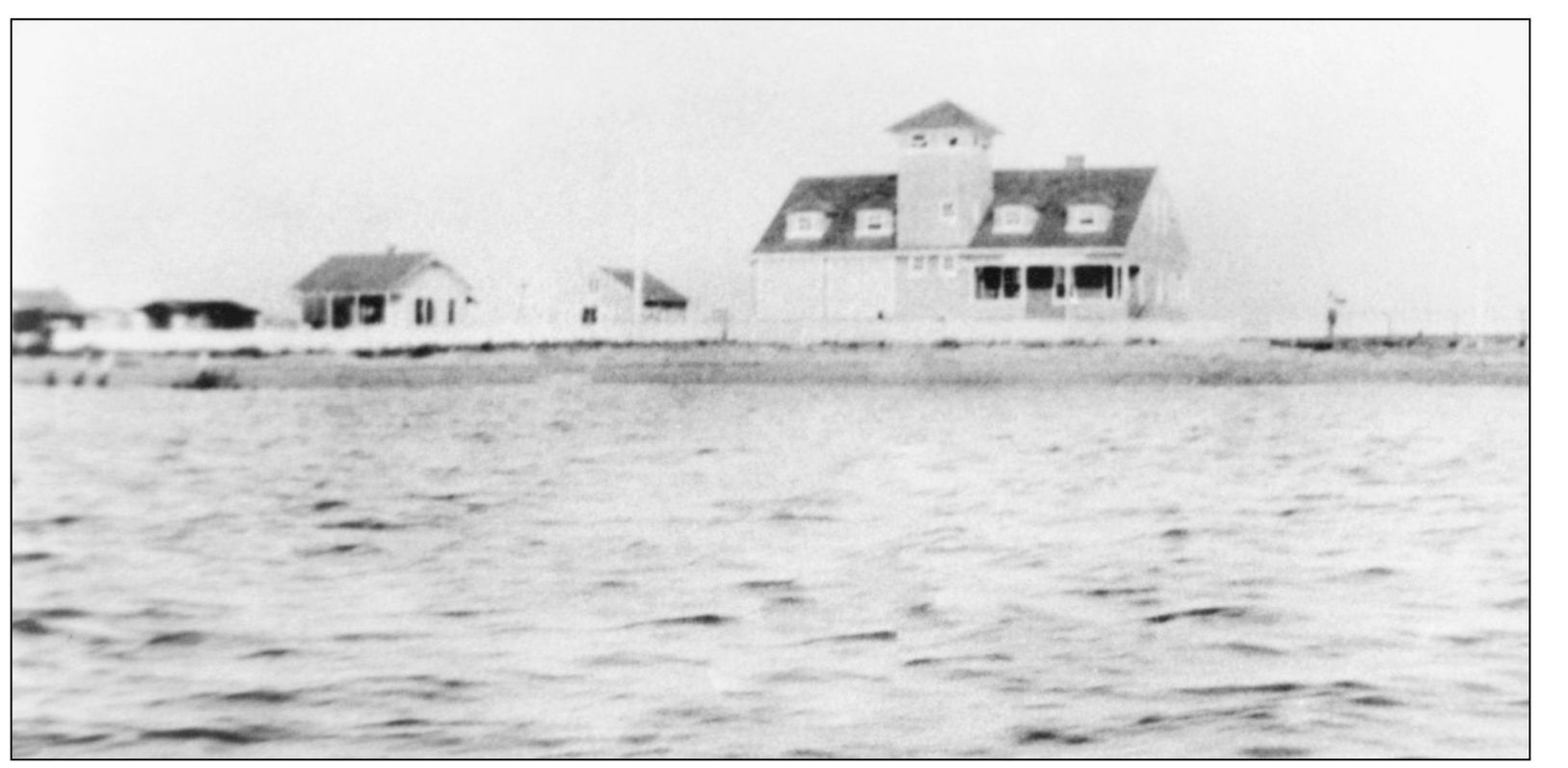
This photograph shows the Metompkin Coast Guard station before the 1933 Chesapeake-Potomac Hurricane, locally known as the “Storm of ’33.” The storm made landfall in the morning of August 23, its eye passing directly over Norfolk. Sustained winds were measured at more than 50 miles per hour with gusts well over 80, and rainfall was measured between 8 and 10 inches. (Courtesy of the Randy Lewis family.)

The damage to the coast guard station is obvious in this photograph, taken just after the storm. The storm damaged many of the stations along the barrier islands, as well as the clubhouses on Parramore and Wallop’s Island. The hotel on Cedar Island was destroyed. Towns all along the coast were inundated by the storm surge between 6 and 9 feet. An estimated 30 lives were lost, and financial damage was over $25 million along the East Coast. Six lives were lost on the Eastern Shore. (Courtesy of the Randy Lewis family.)

Three people were killed and hundreds of homes and business were damaged in early March 1962 in what became known as the Ash Wednesday storm. Chincoteague was hit especially hard by the northeaster, as the tidal surge flooded the town. Other seaside communities such as Greenbackville, Wachapreague, and Oyster also were damaged. The surging tide destroyed the seawall in Cape Charles and flooded homes in upper bayside communities such as Sanford and Saxis. The federal government declared Chincoteague a disaster area and gave $1.75 million in aid to rebuild the town. This aerial view shows Chincoteague just after the storm passed through, with the causeway and bridge visible in the upper left of the photograph. (Courtesy of Dino Johnson.)
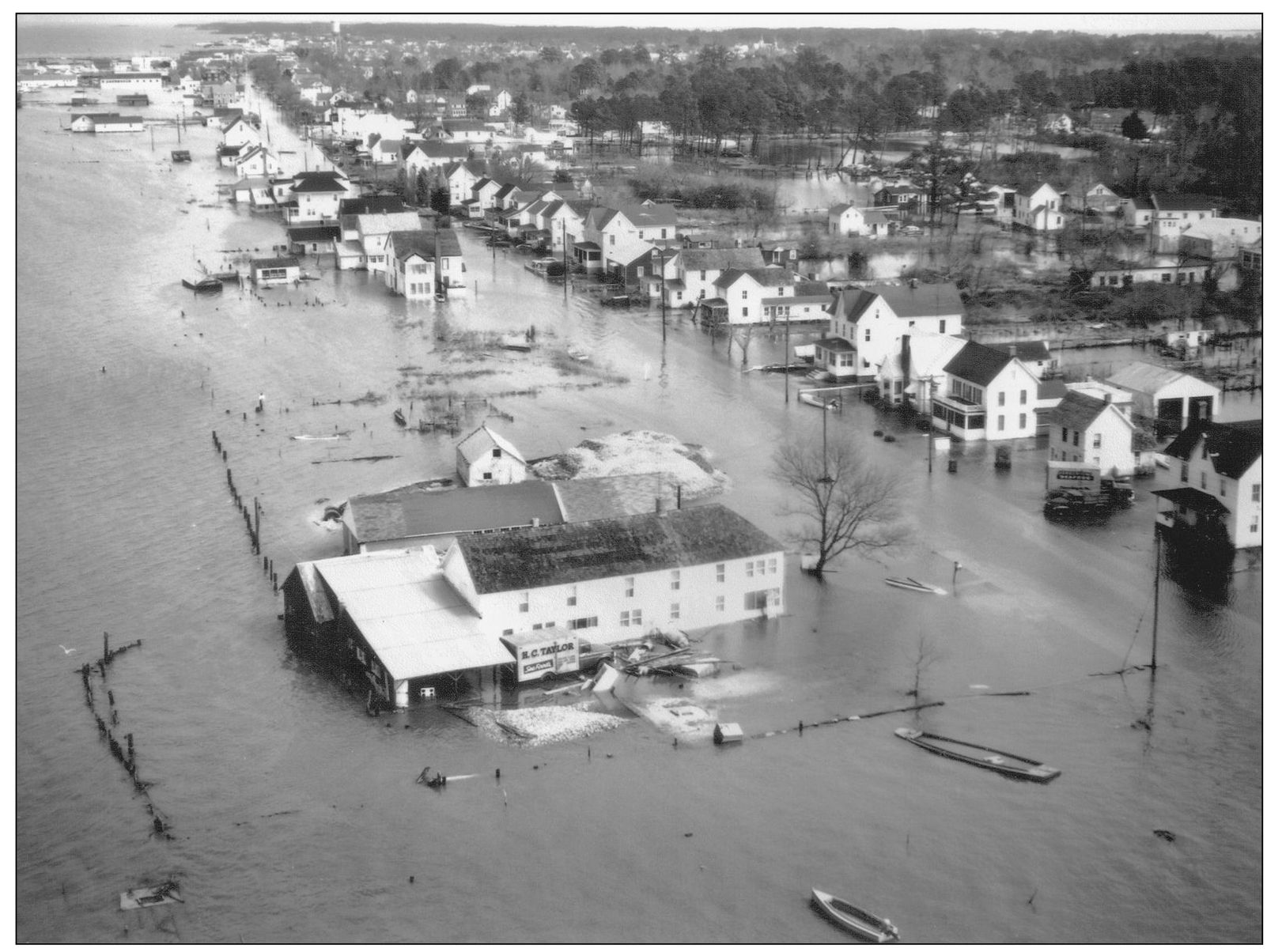
H. C. Taylor Seafoods is visible in this aerial view of South Main Street just after the storm. The tide had receded significantly, yet several feet of water still covered most parts of the town. Almost every automobile on the island was damaged or ruined, and thousands of animals were killed. Between 250,000 and 350,000 chickens perished in the storm, and 145 of the famous Chincoteague ponies drowned. (Courtesy of Dino Johnson.)

During the peak of the tidal surge, Main Street was covered in 6 feet of water. While the tide has receded in this picture, the extent of the flooding is clear, as several feet of water still cover the town. Once the flood had finally gone, the streets were left littered with debris. The Eastern Shore News reported, “Party boats and work boats lay piled up . . . like so many toys dropped by careless children.” (Courtesy of Dino Johnson.)
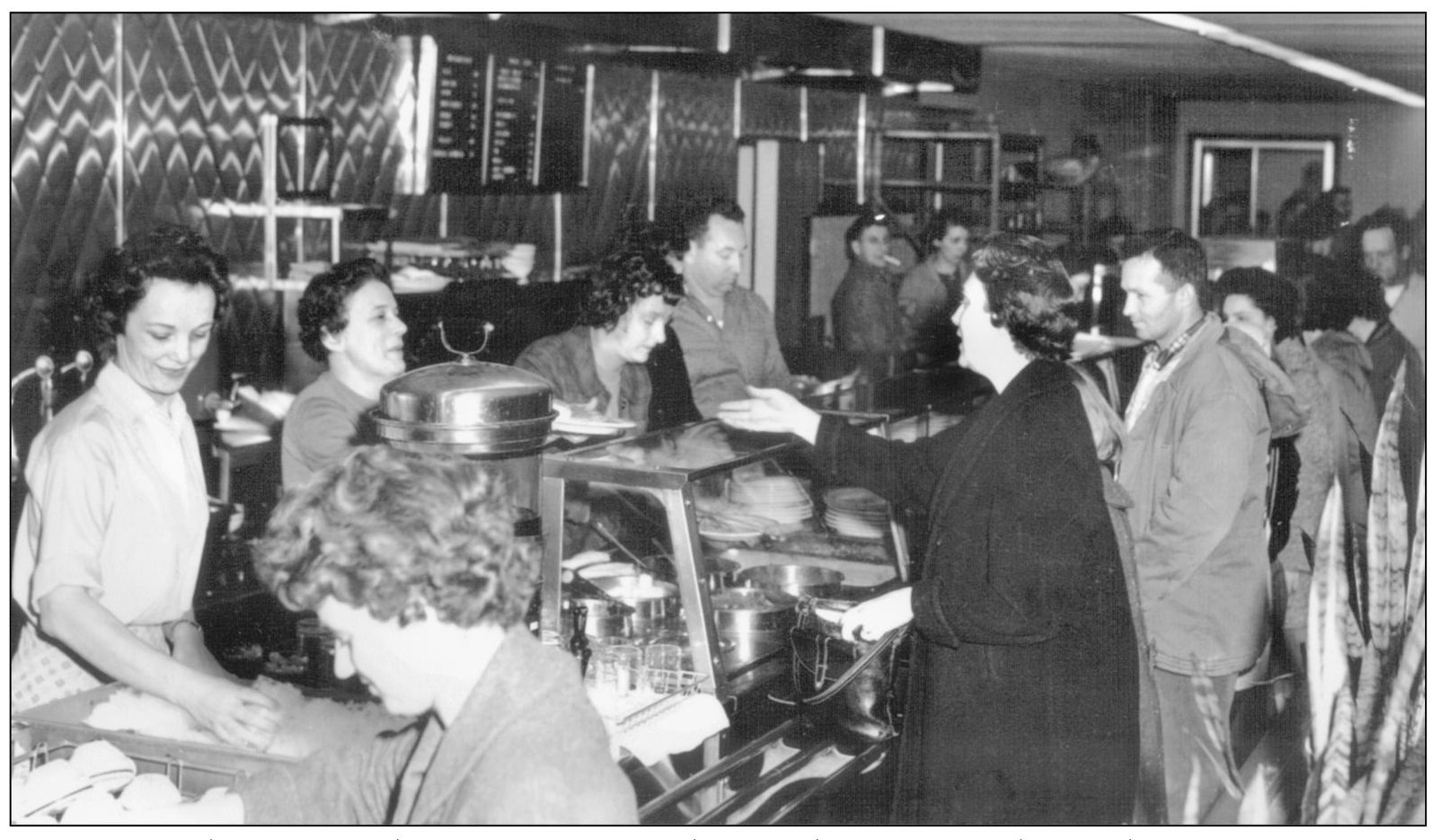
Approximately 2,500 residents were evacuated from Chincoteague during the storm. Numerous agencies, including the army, used boats, helicopters, buses, and cars to ferry people off the island to the mainland, where shelters had been set up by private citizens, the government, and the Red Cross. Almost 1,000 people were brought to the NASA Wallops Station. Evacuees are seen here receiving meals in the cafeteria at NASA. (Courtesy of Dino Johnson.)
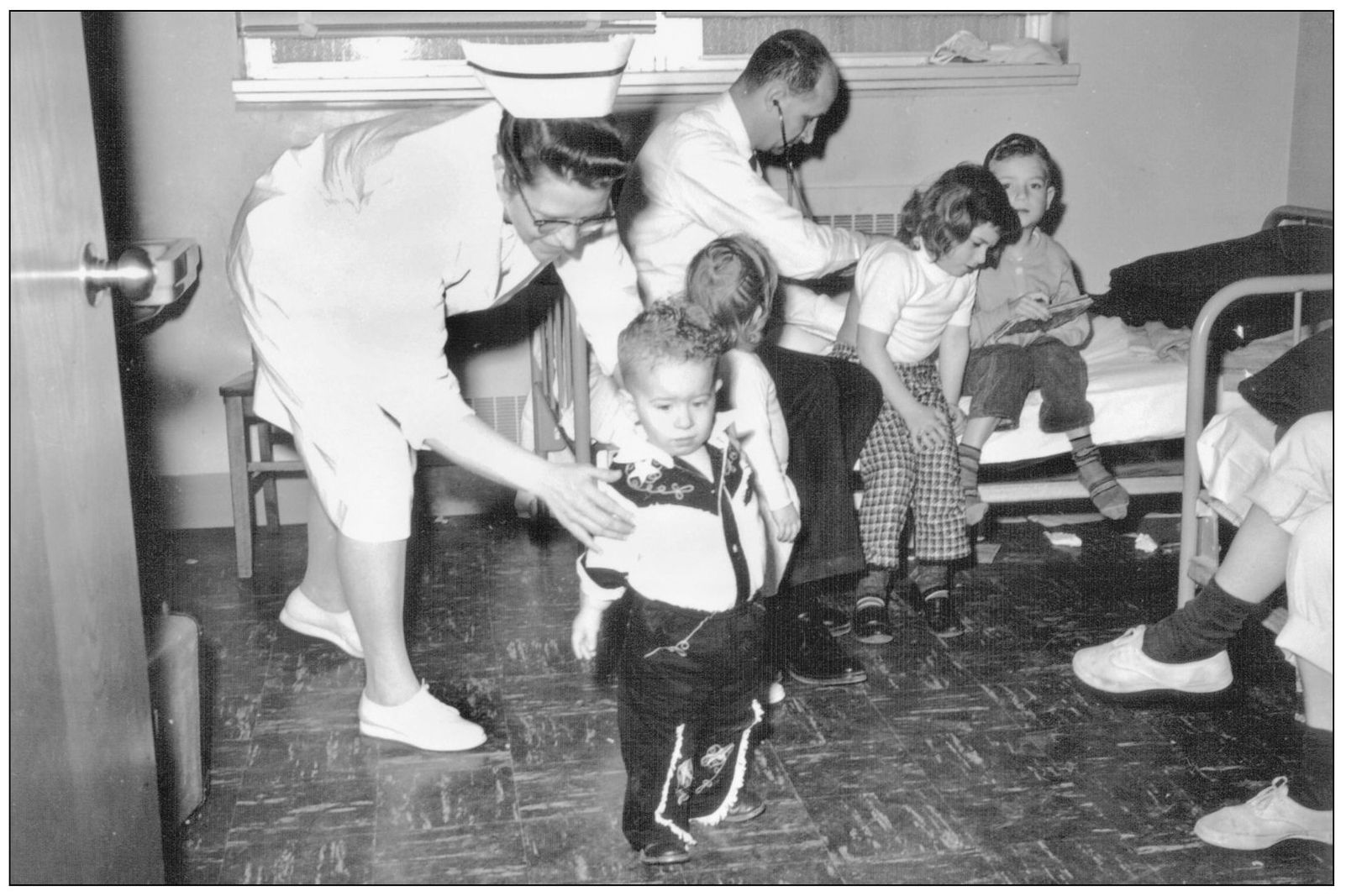
Due to the massive flooding, local health officials feared outbreaks of typhoid and dysentery. Doctors and nurses inoculated the nearly 1,000 evacuees at the NASA Wallops Station. A doctor and a nurse are seen here examining children from Chincoteague at the shelter at NASA Wallops. (Courtesy of Dino Johnson.)
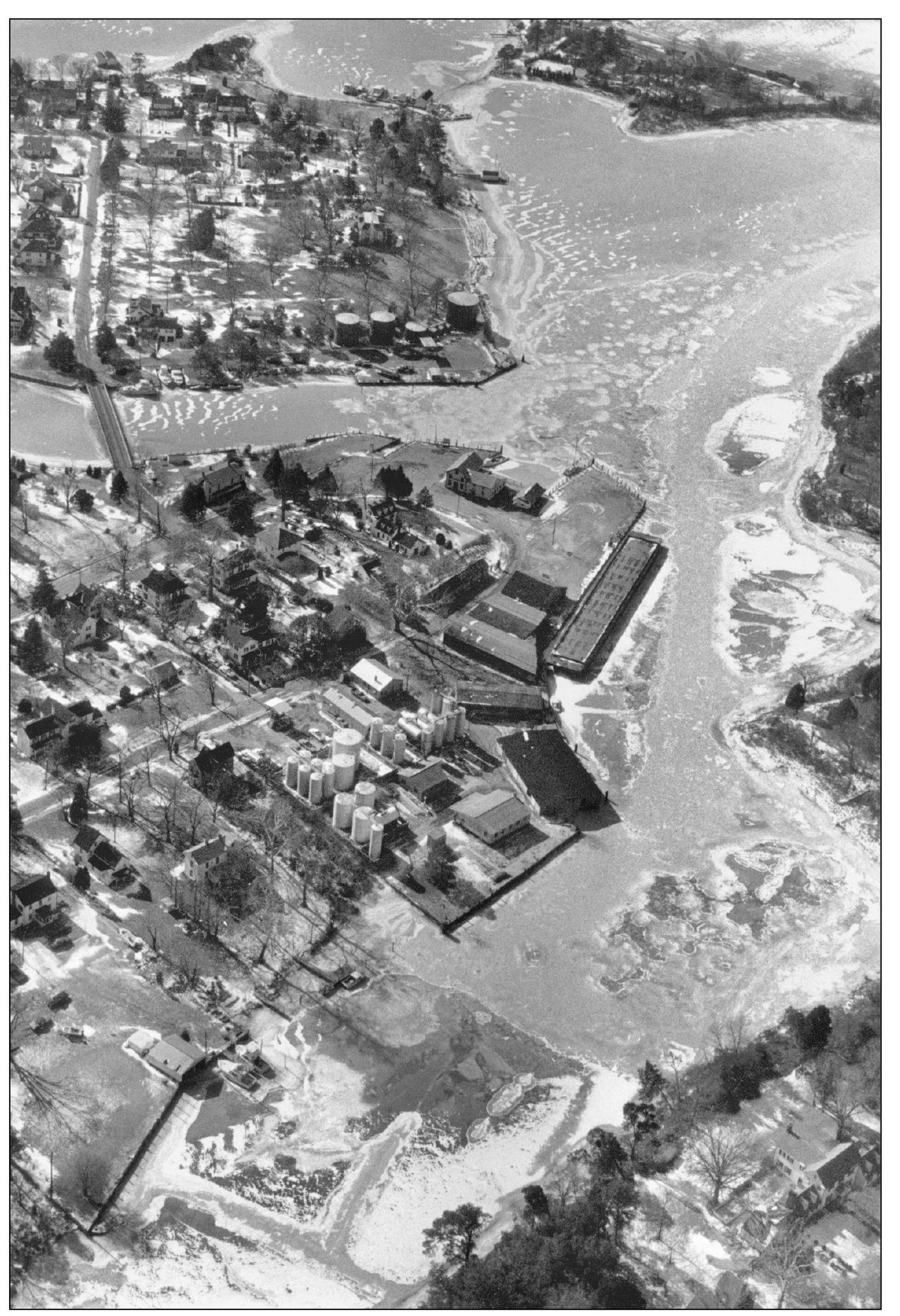
The winter of 1977 was the coldest winter on the East Coast since the signing of the Constitution, and the month of January was the coldest ever for Virginia. The Eastern Shore News reported the average temperature for January was 25.3 degrees, 10.8 degrees below normal, with a low of just 6 degrees above zero. This extended period of cold resulted in massive freezes. Onancock Harbor and Creek, seen in this photograph, was completely frozen and impassable. Because of the severe icing, watermen were unable to work, prompting Pres. Jimmy Carter to declare the Virginia coast a disaster area. Businesses were required to be open no more than 40 hours per week and to keep their thermostats below 65 degrees in order to save oil, and $900,000 was made available to watermen who were unable to work. (Courtesy of authors’ collection.)
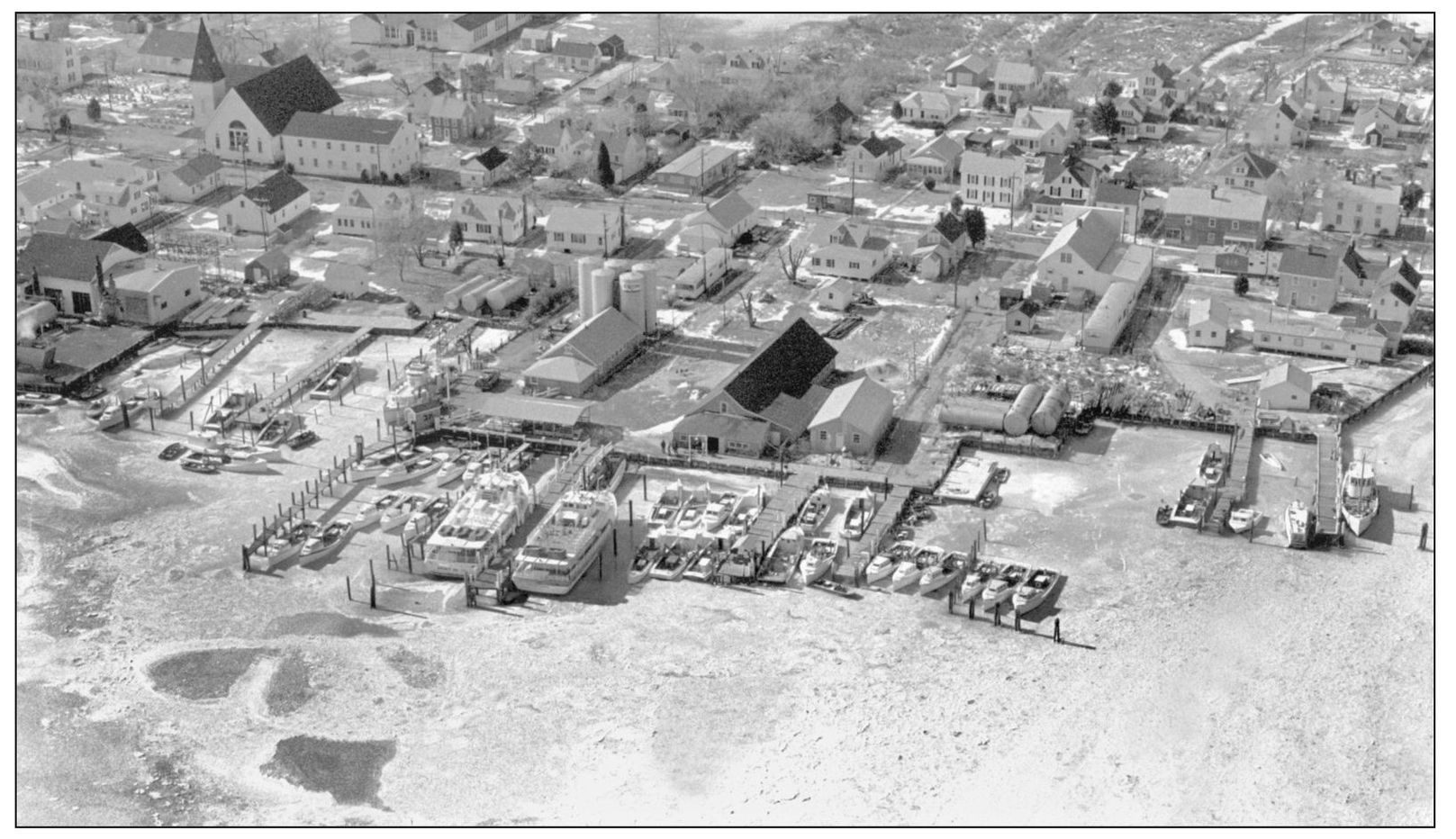
The town on Tangier, seen here with ice surrounding the harbor, was greatly affected by the cold weather. The residents of Tangier rely almost entirely on the water for daily life, and with the Chesapeake Bay frozen, the people of Tangier became imperiled. The town’s economy suffered, as watermen could not dredge for crabs. Food supplies, as well as the mail, had to be airlifted to the island, and heating oil ran dangerously low. (Courtesy of authors’ collection.)

This is the Parramore Island Coast Guard Station with ice surrounding its docks. The coast guard was kept busy during the winter of 1977 trying to keep shipping routes open in the area. On several occasions, the coast guard broke a path through the ice to Tangier so crucial heating oil could be delivered to residents there. (Courtesy of authors’ collection.)
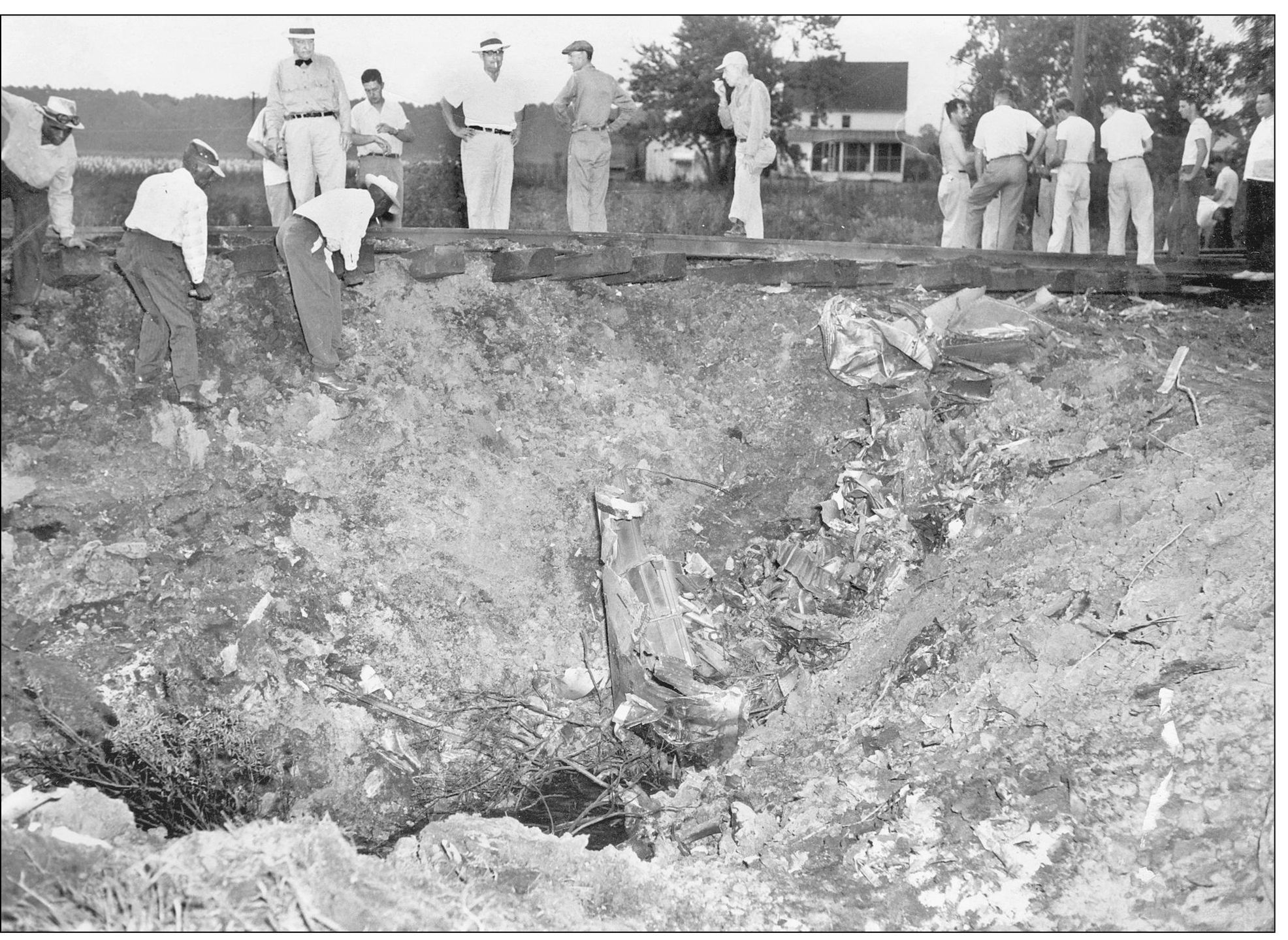
A Langley-based air force pilot was killed and another injured on July 18, 1955, when their F-84F Thunderstreak jets collided over Onancock. One of the pilots, Lt. Karl Gabler, was killed when his airplane crashed northwest of Parksley. The second, Lt. John Hull, parachuted to safety, landing in the shallow waters of Onancock Creek. His jet crashed between U.S. Route 13 and the railroad tracks in Onley, leaving the crater shown here. The Eastern Shore News reported the crater was 12 feet deep and 29 feet wide and required nine truckloads of soil to fill. A machine gun reportedly smashed into a parked car owned by car dealer Alfred Kellam as it fell from the sky, and the windows of numerous homes and businesses were shattered from the explosion. The crash site was near the current T&W Block business. (Courtesy of authors’ collection.)
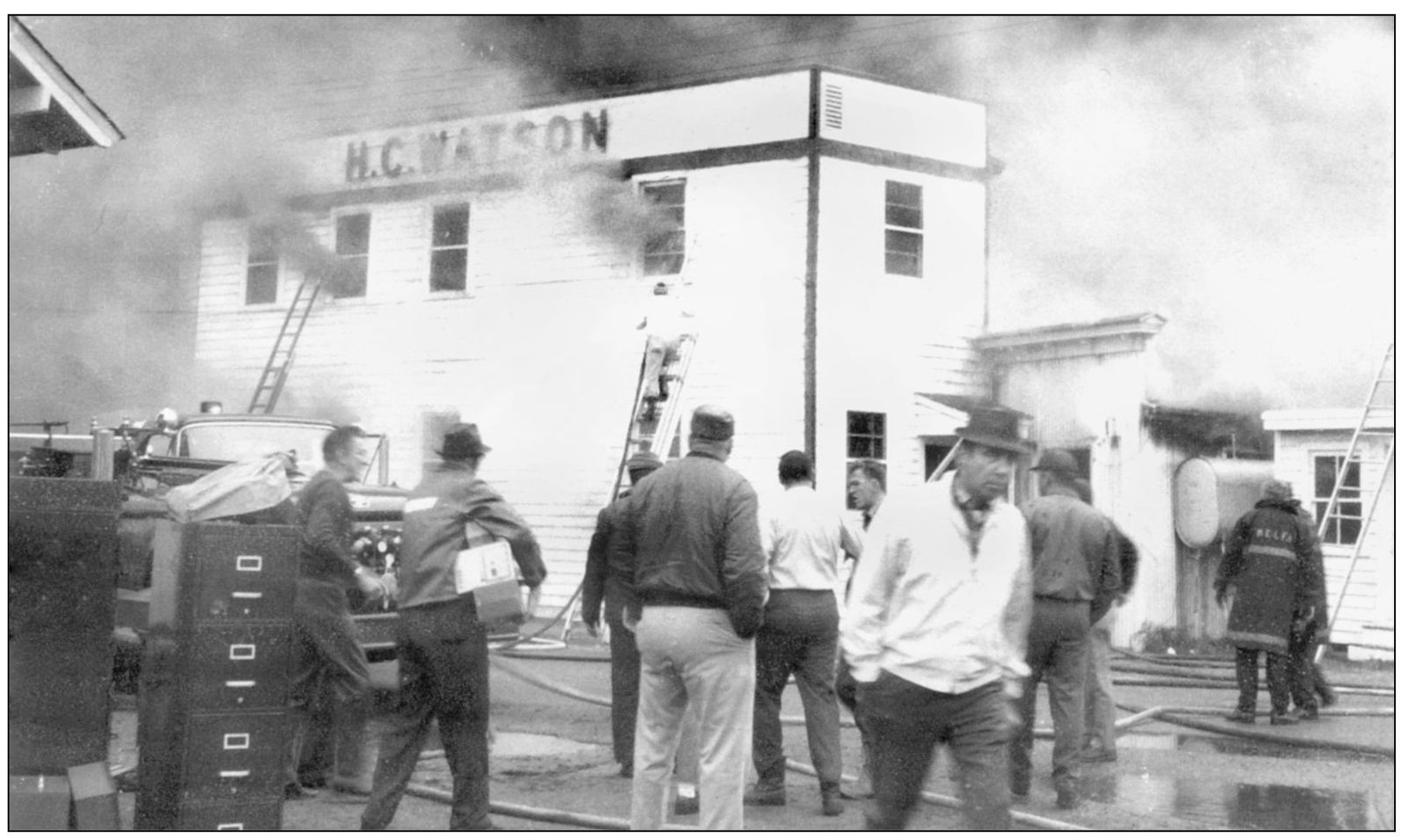
The town of Onley was plagued by fires in the late 1960s and early 1970s, with eight major fires during a period of two years. Arson was widely believed to have been the cause of most of the fires, but a suspect was never identified or charged. The H. C. Watson building, which housed an oil and gas distribution company, is seen burning as firefighters from the area battle the blaze and citizens look on. (Courtesy of authors’ collection.)
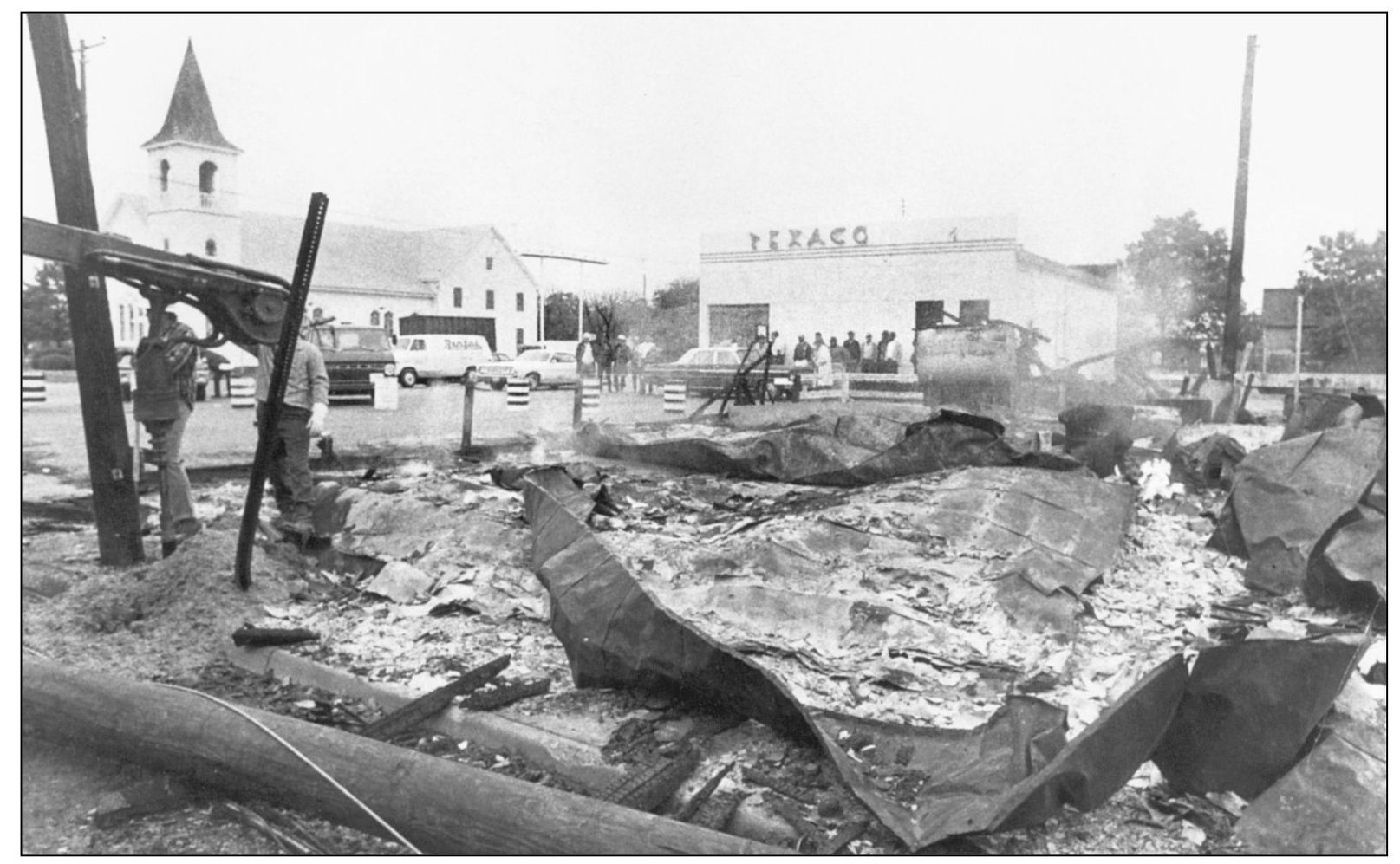
The most damaging of the fires occurred in October 1971 when a blaze destroyed eight of the 11 stores that made up the old retail part of town, just west of the railroad tracks. The fire began in the O. J. Wright hardware store, with the alarm turned in by a town resident at 1:05 a.m. on Tuesday, October 19. The remains of the Davis and Justis Furniture Company are seen in this photograph. (Courtesy of authors’ collection.)

This photograph, looking down Main Street, shows the scale of destruction from the fire. The fire destroyed the hardware store, the Onley Barber Shop, Scott’s Beauty Shop, and White Brothers Plumbing, among other businesses. Two hundred firemen fought the blaze with 45 pieces of equipment. After the fires, the town’s commercial center was moved to Route 13, where Four Corner Plaza was built. (Courtesy of authors’ collection.)

On July 1, 1978, an electrical fire gutted the fourth floor of the iconic Wachapreague Hotel. Seventy-five firemen from nine companies fought the blaze and were able to contain the fire to the fourth floor. However, extensive water damage caused the hotel, which was built in 1902, to be declared a complete loss. (Courtesy of the Randy Lewis family.)

Seen here are two Saltwater Cowboys leading the herd of Chincoteague ponies. Each year, the ponies that roam Assateague Island are rounded up and herded across the channel to Chincoteague Island. Thousands of people flock to Chincoteague to see the ponies swim, as well as to participate in the auction of a number of the ponies. The auction proceeds benefit the Chincoteague Volunteer Fire Department, which owns the ponies. (Courtesy of authors’ collection.)
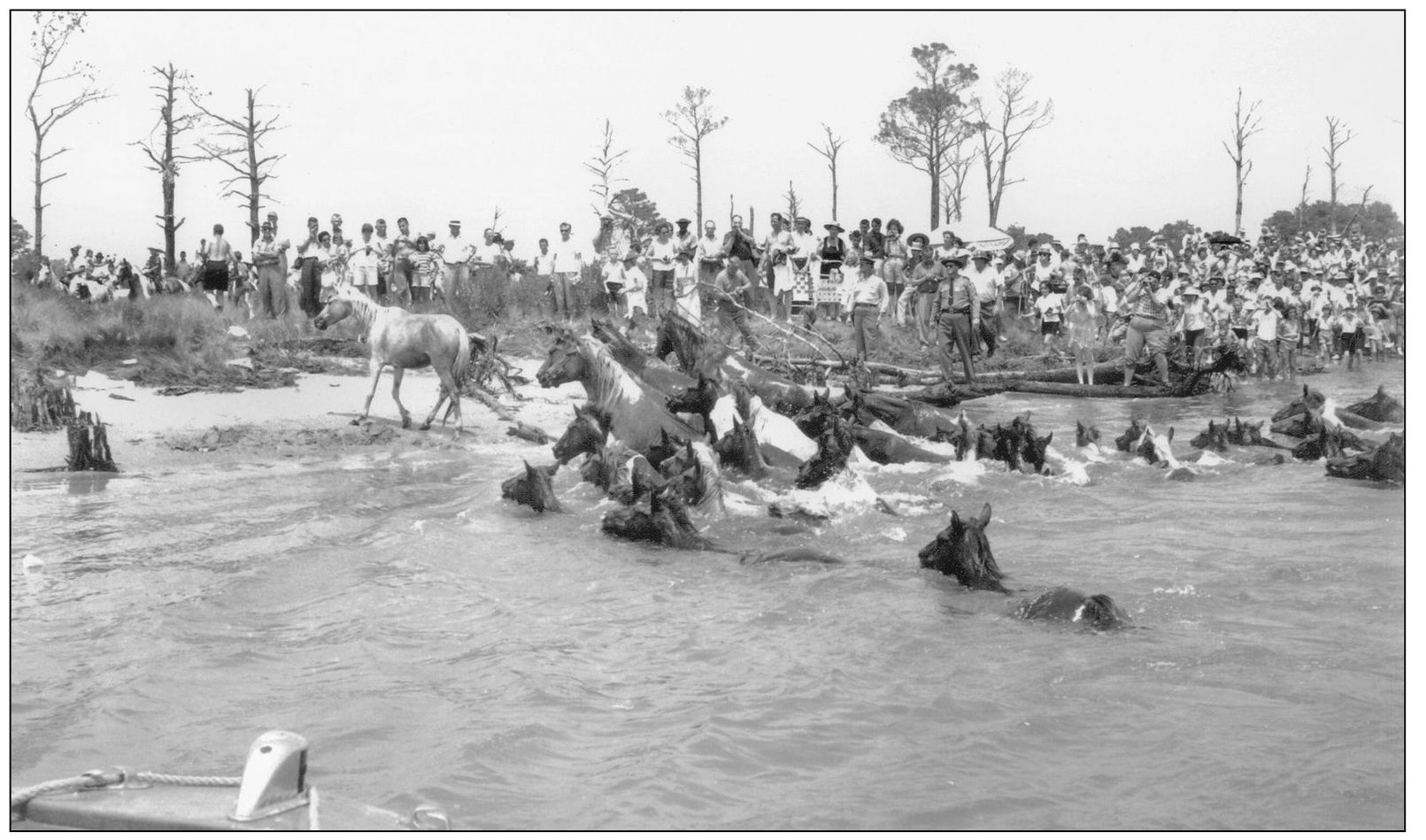
The ponies are herded up and make the swim across the channel on the last Wednesday of July, and the auction takes place on Thursday. The remaining ponies are swum back to Assateague Island, as seen in this photograph, where they are free to roam for another year. (Courtesy of authors’ collection.)

Seen here in this undated photograph, the popular CBS Evening News anchorman Walter Cronkite stands on his sailboat at the Onancock Harbor. Onancock has long been a popular harbor town, dating back to the 1600s when settlers used the deep creek to access the northern part of the Eastern Shore. (Robertson Collection, courtesy of ESVHS.)

In this photograph, Rasha the Elephant boards a barge in Crisfield, Maryland, for a voyage to Tangier Island in July 1977. Rasha was part of a circus group that performed on the island, providing a rare treat for its residents. (Courtesy of authors’ collection.)